Designing the hugels (2018)
Posted on 2018-05-21 14:00 in designs • Written by Arno Peters
This is a design for the hugelculture in Arno's backyard.
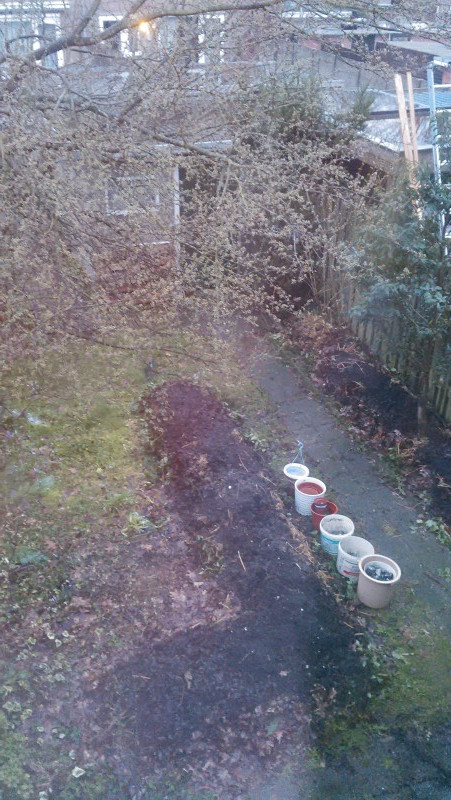
Background
Designer: Arno Peters.
Design strategy
I used CEAP in designing this.
Collect site information
See site information for all collected information on the backyard.
Available materials for the hugels:
- cuttings
- branches from Viburnum tinus (laurustinus / sneeuwbol)
- branches from Pinophyta (conifer / conifeer)
- branches from Buddleja davidii (summer lilac / vlinderstruik)
- branches from Prunus domestica (mirabelle / mirabel)
- garden waste
- manure mixed with straw from local petting zoo
- leafs from local park
- compost from local recycling point
- earth from back yard
Evaluate the information
We have all elements needed for a good hugelculture.
Apply Permaculture Principle
Holmgren principles
- Observe and Interact
- soil in back yard needs more organic matter and nutrients
- Catch and Store Energy
- shape of the mound catches sunlight and warms the earth to extend the growing season
- decomposition of the materials in the hugel gives off (some) heat
- Obtain a Yield
- hugel provides habitat for soil creatures, bacteria and fungi
- plants on the hugel will produce more
- Apply Self-regulation and Accept Feedback
- best location of plants on the hugel will take some experimentation
- Use and Value Renewable Resources and Services
- all material in the hugel came from renewable sources
- Produce No Waste
- all material in the hugel will turn into plant food in time
- Design from Patterns to Details
- hugel construction is from big parts to small parts: biggest branches at the bottom and filling gaps with smaller branches and leaves
- hugel most effective when its orientation is perpendicular to the sun's path
- top of the hugel is drier than the foot of the hugel
- Integrate Rather than Segregate
- hugel follows the contour of the garden
- existing plants become embedded in the hugel
- trees like to be watered at the drip line, hugels retain moisture and release nutrients, place hugel on drip line for added benefit to the tree
- Use Small and Slow Solutions
- all construction was done by hand
- all transportation of materials was done on foot or by bike.
- we used a bike trailer
- Use and Value Diversity
- content of the hugel has a variety of materials
- branches containing mostly carbon
- leaves containing more nitrogen
- animal manure containing more nitrogen
- earth to give plant roots something to hold on to
- content of the hugel has a variety of materials
- Use Edges and Value the Marginal
- hugels follow the contour of the pathway
- marginal plants improve biodiversity and attract insects
- Creatively Use and Respond to Change
- some parts of the hugel have proven better for annuals than others
- potatoes love the hugel
Plan for action
Implement
Construction started in January 2017 and the hugels were ready in March 2017.
Collect material for the base layer
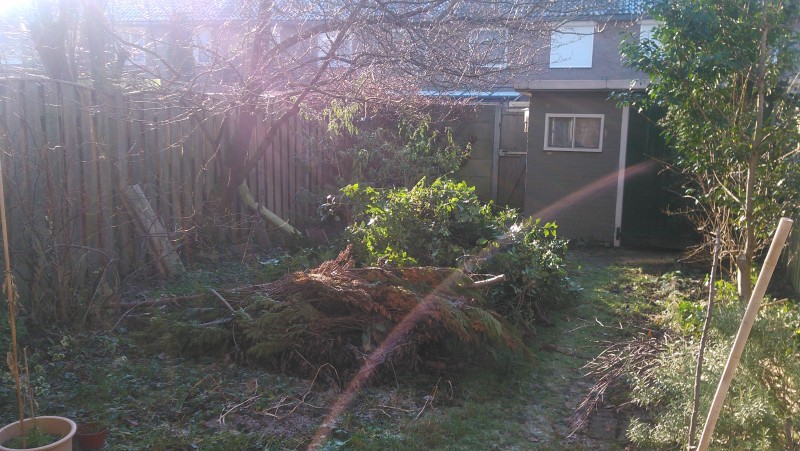
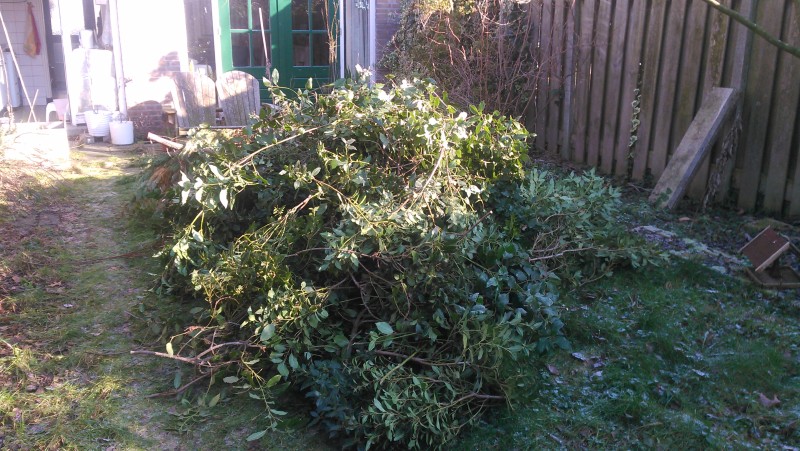
Constructing the hugel in the border
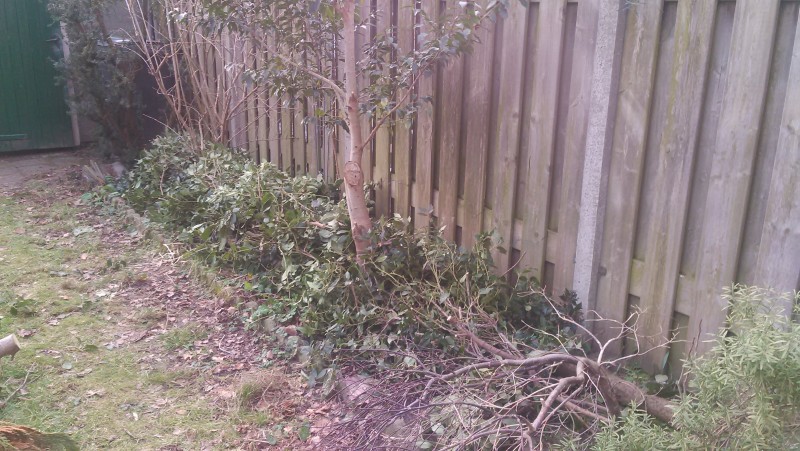
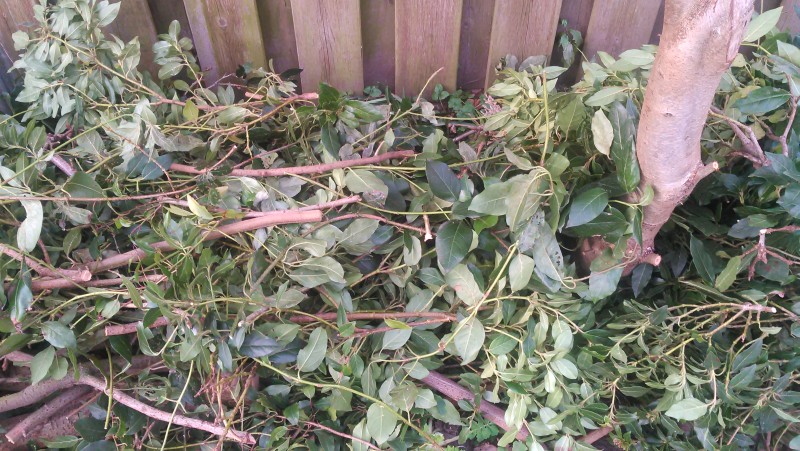
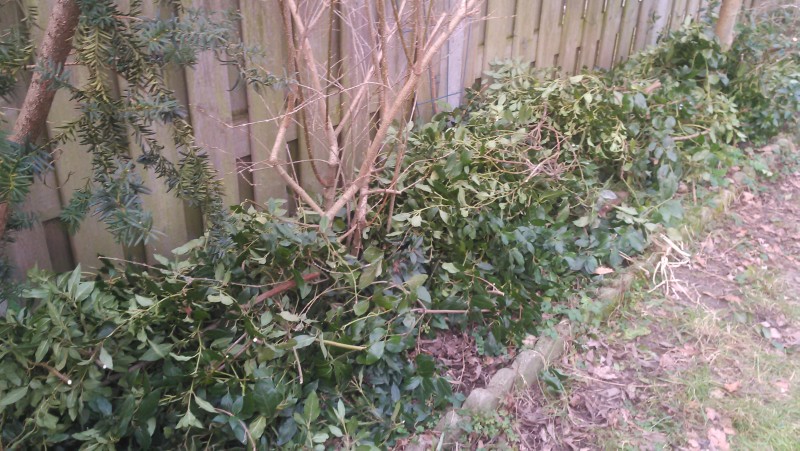
Constructing the hugel on the lawn
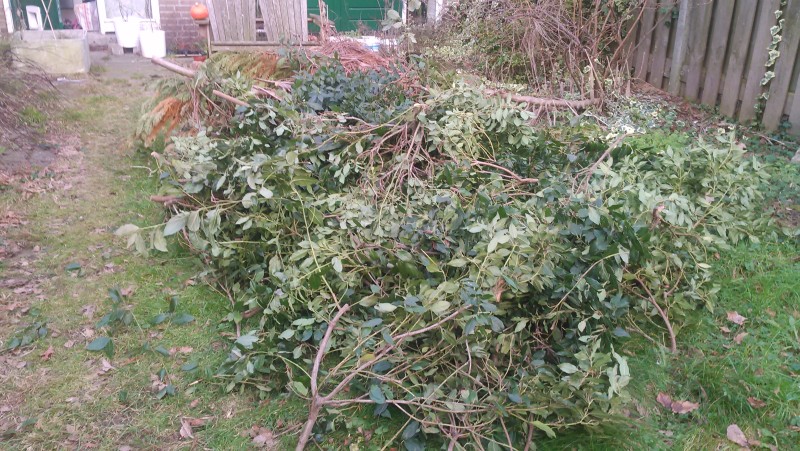

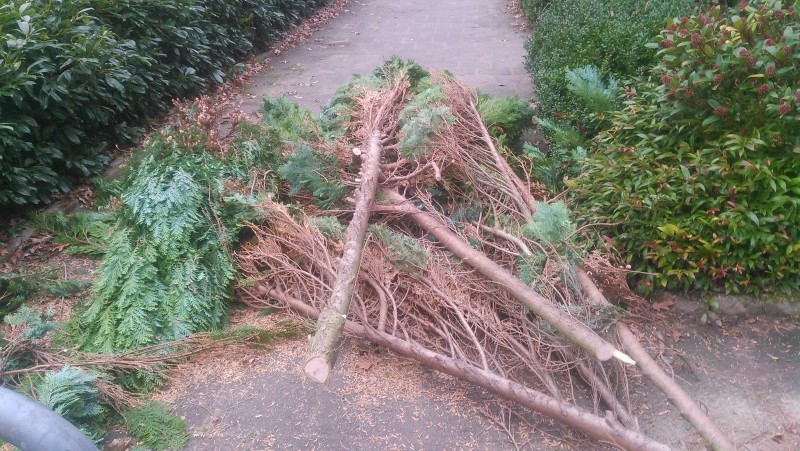

The finished hugels in March 2017
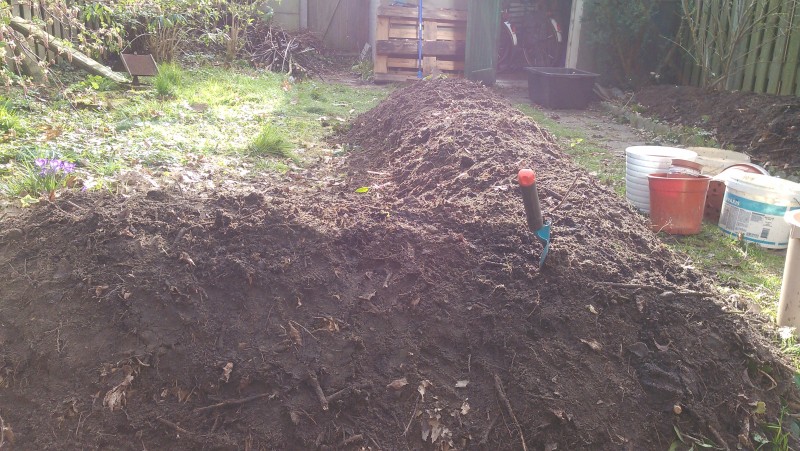
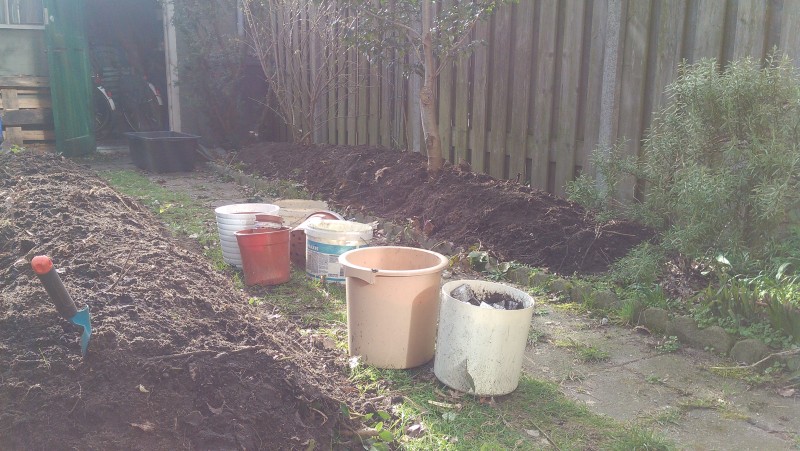
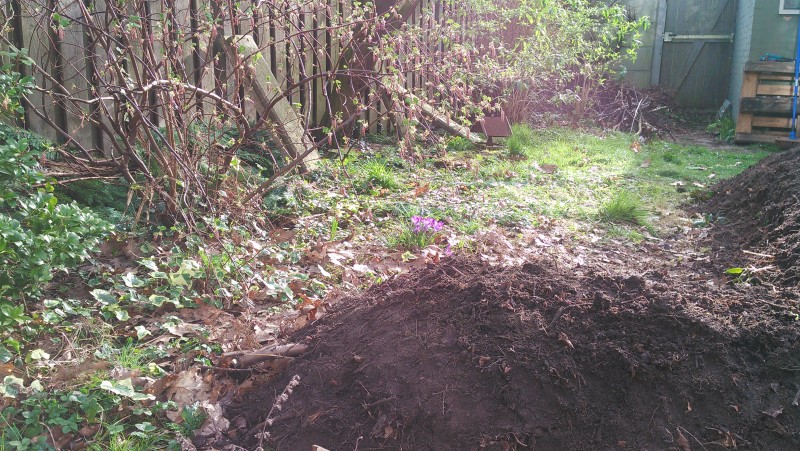
Maintain
In early 2018 the hugel was becoming uneven in height: some parts were sinking faster than others. To counteract this in some parts, we added a layer of wetted cardboard on top of the hugel and covered the cardboard with extra compost. The cardboard suppresses some of the less desired herbs and grasses and the compost allows planting and sowing some desired species.
Evaluate
I am amazed by how much life there is in and around the hugels: beetles, flies, ants, bumble bees, spiders, snails and slugs.
I have observed mushrooms growing on the hugel indicating a healthy fungal community.
The hugels are great at absorbing water. Every time I add water to the hugel, the moisture infiltrates quickly in the mound. In 2018 I added an overflow from the water catchment system to the hugel. The overflow canal is about 1 meter long. Most overflow water infiltrates completely after about 10-20 cm.
Access to sun light is a major restriction in the garden. The parts of the hugel that get sun do amazingly well, the parts in the shade do a bit worse. In response we planted more shade-tolerant species and switched to perennial plants like berries.
A really successful plant in the hugel has been the Fragaria vesca (wild strawberry / bosaardbei). We planted a single specimen in 2017. In spring of 2018 we observed the plant had overtaken about 2 m². We hope to encourage it to overtake the niche now taken up by Potentilla indica (mock strawberry / schijnaardbei).
I am very pleased with the results thus far.